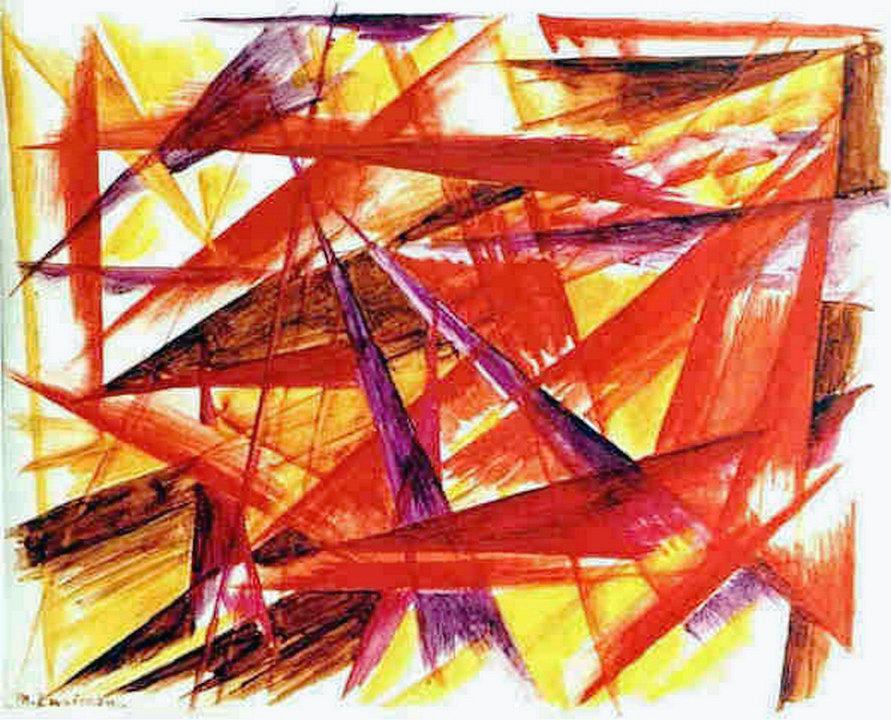Term derived from the word for ‘ray’ (Rus luch), used to refer to an abstract style of painting developed by the Russian artist Mikhail Larionov These included Glass: Rayist Method (New York, Guggenheim) and Rayist Sausage and Mackerel (Cologne, Mus Ludwig) In 1913 Larionov began to expound and elaborate his theory in a series of manifestos
Initially the theory of Rayism was fairly simple Larionov declared that when light rays are reflected from the surface of an object they intersect each other, creating ‘intangible spatial forms’ that the artist is able to paint Early works such as Glass: Rayist Method expound the first stage of this theory, where objects reflect bold clusters of light rays that shatter and fragment the picture space By the summer of 1913 Larionov was prepared to abolish the object from the picture altogether His manifesto Luchizm (1913) argues for a ‘non-objective approach’ to art, and his paintings and drawings began to depict only the reflected rays and the shifting planes created by their intersection
Rayonism is a style of abstract art that developed in Russia in 1911. Mikhail Larionov and Natalia Goncharova developed rayonism after hearing a series of lectures about Futurism by Marinetti in Moscow The Futurists took speed, technology and modernity as their inspiration, depicting the dynamic character of early 20th century life
The Rayonists sought an art that floated beyond abstraction, outside of time and space, and to break the barriers between the artist and the public They derived the name from the use of dynamic rays of contrasting color, representing lines of reflected light — crossing of reflected rays from various objects
At the 1913 Target exhibition they introduced the style to the public In their literature they described Rayonism as naturally encompassing all existing styles and forms of the art of the past, as they, like life, are simply points of departure for a Rayonist perception and construction of a picture
The style of Rayonnist painting that we advance signifies spatial forms which are obtained arising from the intersection of the reflected rays of various objects, and forms chosen by the artist’s will The ray is depicted provisionally on the surface by a colored line That which is valuable for the lover of painting finds its maximum expression in a rayonnist picture The objects that we see in life play no role here, but that which is the essence of painting itself can be shown here best of all–the combination of color, its saturation, the relation of colored masses, depth, texture
The sum of rays from object A intersects the sum of rays from object B; in the space between them a certain form appears, and this is isolated by the artist’s will
Perception, not of the object itself, but of the sum of rays from it, is, by its very nature, much closer to the symbolic surface of the picture than is the object itself This is almost the same as the mirage which appears in the scorching air of the desert and depicts distant towns, lakes, and oases in the sky (in concrete instances) Rayonism erases the barriers that exist between the picture’s surface and nature
Rayonists not only painted, they also designed theater sets and produced book illustrations
